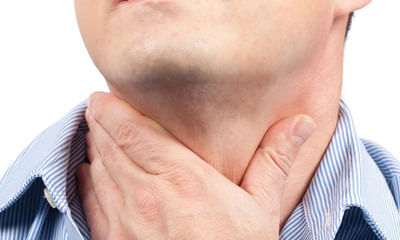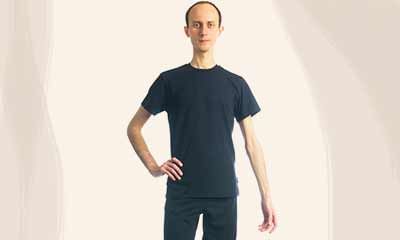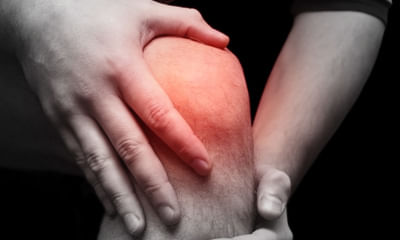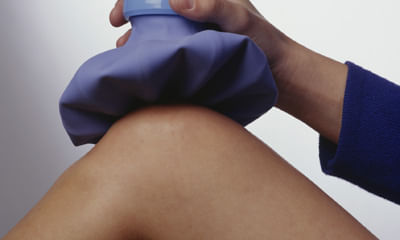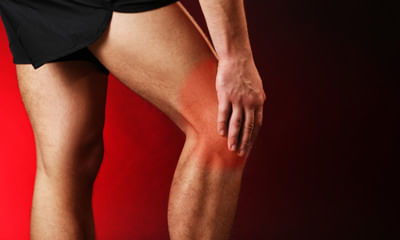Why Do My Knees Crack When I Stand Up
Dear doctors I hear crack/popping sound in my front neck and also back neck every time I make my neck/throat movement. W ...
Ask Free Question
If you're experiencing a crackling or popping sound in your neck when you move it, it could be due to several possible reasons: 1. Air bubbles: the sound could be caused by the release of air bubbles in the joints of the neck as you move. This is similar to the sound produced when you crack your knuckles. It is generally harmless and not a cause for concern. 2. Joint dysfunction: it's possible that the crackling sound is related to joint dysfunction, such as misalignment or degeneration of the cervical spine. This could be due to conditions like cervical osteoarthritis or cervical facet joint syndrome. If the cracking sound is accompanied by pain or restricted movement, it's advisable to consult a healthcare professional for an evaluation and appropriate management. 3. Muscle or ligament tension: tight muscles or ligaments in the neck can also cause cracking or popping sounds when they rub against each other during movement. This can occur due to poor posture, stress, or muscle imbalances. Stretching exercises, relaxation techniques, and postural correction may help alleviate these symptoms. If the cracking sound is not associated with pain, swelling, or other concerning symptoms, it is generally considered normal. However, it's always a good idea to consult a healthcare professional for a proper evaluation and diagnosis, especially if you're experiencing accompanying symptoms or if the sound is causing significant discomfort. The healthcare professional will be able to assess your specific situation, perform a physical examination, and may order additional tests if necessary. They can provide you with appropriate advice and treatment options based on the underlying cause of the crackling sound in your neck.
I had hip impingement surgery in 2021. I’ve been having foot and ankle pain since. It’s recently have gotten worse with ...
Ask Free Question
Stretching and strengthening exercises or use of specialized devices may provide symptom relief. These include: physical therapy. A physical therapist can instruct you in a series of exercises to stretch the plantar fascia and achilles tendon and to strengthen lower leg muscles, which stabilize your ankle and heel. A therapist might also teach you to apply athletic taping to support the bottom of your foot. Night splints. Your physical therapist or doctor might recommend that you wear a splint that stretches your calf and the arch of your foot while you sleep. This holds the plantar fascia and achilles tendon in a lengthened position overnight and facilitates stretching. Orthotics. Your doctor might prescribe off-the-shelf or custom-fitted arch supports (orthotics) to help distribute pressure to your feet more evenly. Injections. Injecting a type of steroid medication into the tender area can provide temporary pain relief. Multiple injections aren't recommended because they can weaken your plantar fascia and possibly cause it to rupture. More recently, platelet-rich plasma has been used, under ultrasound guidance, to provide pain relief with less risk of tissue rupture. Lifestyle and home remediesto reduce the pain of plantar fasciitis, try these self-care tips: maintain a healthy weight. Lose weight if you're overweight or obese to minimize stress on your plantar fascia. Choose supportive shoes. Avoid high heels. Buy shoes with a low to moderate heel, good arch support and shock absorbency. Don't go barefoot, especially on hard surfaces. Don't wear worn-out athletic shoes. Replace your old athletic shoes before they stop supporting and cushioning your feet. If you're a runner, buy new shoes after about 400 to 500 miles of use. Change your sport. Try a low-impact sport, such as swimming or bicycling, instead of walking or jogging. Apply ice. Hold a cloth-covered ice pack over the area of pain for 15 to 20 minutes three or four times a day or after activity. Or try ice massage. Freeze a water-filled paper cup and roll it over the site of discomfort for about five to seven minutes. Regular ice massage can help reduce pain and inflammation. Stretch your arches. Simple home exercises can stretch your plantar fascia, achilles tendon and calf muscles. Prevention: maintain a healthy weight. Choose supportive shoes. Don't wear worn-out shoes. Heel pain apply ice use an ice pack or cold compress on your foot for 10 to 15 minutes at a time. This is especially beneficial at the end of a long day or when you’ve spent a lot of time on your feet. Or, roll a frozen water bottle under your foot. This method incorporates a bit of massage, relieving tightness in the bottom of your foot. Massage. Massaging the arch of your foot helps to relieve pain and promote mobility. Use your fingers and knuckles to deeply massage your foot for 1 to 5 minutes at a time. One technique is to place both thumbs at the center line of your arch and move them to the outer edges of your feet. Inserts. Use cushion inserts in your shoes for additional support and cushioning. Inexpensive options can be purchased off the shelf. Wear supportive shoes with thicker soles and extra cushioning for additional support that can help to reduce tension in the plantar fascia. Kinesiology tape can be used to improve arch and heel support. Night splints. Many people find quick and effective results by using night splints. They can be worn while sleeping to stretch the plantar fascia. They help to keep the plantar fascia relaxed and prevent you from pointing your feet down. Exercise foot flex use your hand to pull your toes back toward your shin. Hold this position for about 30 seconds .do each side two to three times. Toe towel grab place a small towel under your foot. Curl your toes to grip the towel. Raise the front of your foot off the floor. Hold this position for a few seconds. Release the towel as you lift up your toes and spread them as far apart as possible. Heel and calf stretch to do this stretch: 1.stand facing a wall. 2.place your hands on the wall and move one foot back as far as you can comfortably. Toes on both feet should be facing forward, heels flat, with a slight bend in your knees. 3.lean into the stretch and hold for 30 seconds. You should feel the stretch in your back leg. 4.change legs and repeat. 5.do this stretch twice for both legs. Golf ball roll roll a golf baell under your right foot. Continue for up to 1 minute. Do each foot two to three times.
Hello Dr. I'm 21 years old .i witness a cracking sound from my joints especially right side shoulder. And slight pain in ...
Ask Free Question
Strenghtening exercises 1.pendulum stretch do this exercise first. Relax your shoulders. Stand and lean over slightly, allowing the affected arm to hang down. Swing the arm in a small circle — about a foot in diameter. Perform 10 revolutions in each direction, once a day. As your symptoms improve, increase the diameter of your swing, but never force it. When you're ready for more, increase the stretch by holding a light weight (three to five pounds) in the swinging arm. 2. Towel stretch hold one end of a three-foot-long towel behind your back and grab the opposite end with your other hand. Hold the towel in a horizontal position. Use your good arm to pull the affected arm upward to stretch it. You can also do an advanced version of this exercise with the towel draped over your good shoulder. Hold the bottom of the towel with the affected arm and pull it toward the lower back with the unaffected arm. Do this 10 to 20 times a day. 3. Finger walk face a wall three-quarters of an arm's length away. Reach out and touch the wall at waist level with the fingertips of the affected arm. With your elbow slightly bent, slowly walk your fingers up the wall, spider-like, until you've raised your arm as far as you comfortably can. Your fingers should be doing the work, not your shoulder muscles. Slowly lower the arm (with the help of the good arm, if necessary) and repeat. Perform this exercise 10 to 20 times a day. 4. Cross-body reachsit or stand. Use your good arm to lift your affected arm at the elbow, and bring it up and across your body, exerting gentle pressure to stretch the shoulder. Hold the stretch for 15 to 20 seconds. Do this 10 to 20 times per day. 5. Armpit stretch using your good arm, lift the affected arm onto a shelf about breast-high. Gently bend your knees, opening up the armpit. Deepen your knee bend slightly, gently stretching the armpit, and then straighten. With each knee bend, stretch a little further, but don't force it. Do this 10 to 20 times each day. Starting to strengthen as your range of motion improves, add rotator cuff–strengthening exercises. Be sure to warm up your shoulder and do your stretching exercises before you perform strengthening exercises. 6. Outward rotationhold a rubber exercise band between your hands with your elbows at a 90-degree angle close to your sides. Rotate the lower part of the affected arm outward two or three inches and hold for five seconds. Repeat 10 to 15 times, once a day. 7. Inward rotation stand next to a closed door, and hook one end of a rubber exercise band around the doorknob. Hold the other end with the hand of the affected arm, holding your elbow at a 90-degree angle. Pull the band toward your body two or three inches and hold for five seconds. Repeat 10 to 15 times, once a day. Shoulder exercises and stretches regular exercises and stretches can keep your shoulder strong and flexible. A few things to remember before swinging in to exercises: •stop any exercise if you have more shoulder pain. It may be too soon for you to try. •watch your form. Exercising incorrectly can also cause or worsen shoulder problems.
I am anubhav going to be 21 year old in may 2023 ,my weight is 115 kg, height is 165 cm, I was getting down from stairs, ...
Ask Free Question
Considerations before starting flexibility and strength exercises are key to relieving hip pain. Although these exercises may result in temporary discomfort, they should not cause or aggravate pain. If an exercise causes pain, stop doing it or try going at a slower or gentler pace. Individuals who have recently had a hip replacement should consult a doctor or physical therapist before performing any of the exercises below. Exercises 1–4 the first four exercises stretch the muscles around the hip joint, which can help reduce stiffness and improve joint mobility. A person should perform these exercises at times when they are feeling the least amount of pain and stiffness. A good time to do them is after a warm shower or bath when the muscles are most relaxed. Begin with one or two exercises a day, three times a week. If this feels comfortable, try doing several exercises once a day. Exercises 5–14 the aim of these exercises is to strengthen the hip muscles to better support the hip joint, which can help relieve pain. Resistance training is a form of exercise for developing muscular strength. In resistance training, a person uses either low weights or their body mass to create resistance for their muscles to work against. People who experience hip pain or discomfort for more than an hour following these exercises should reduce the number of repetitions accordingly. 1. Knee lift to perform knee lifts: lie on the back, extending both legs flat along the floor. Keeping the left leg straight, pull the right knee up toward the chest. Place both hands on top of the knee to help pull it in toward the chest. Hold the stretch for 10 seconds. Let go of the knee and gently lower the leg back toward the floor. Repeat this exercise 5–10 times on each knee. 2. External hip rotation to perform external hip rotations: sit on the floor with both legs out in front. Bend the legs at the knees and press the soles of the feet together. Place a hand on top of each knee and gently push them both down toward the floor. Apply pressure to the knees until there is a stretch, but do not push them further than is comfortable. Hold the stretch for 10 seconds and then relax. Repeat the stretch 5–10 times. 3. Double hip rotation to perform double hip rotations: lie flat on the back. Then, bend the knees and bring them toward the body until the feet are flat on the floor. Gently rotate the knees to the left, lowering them toward the floor. Rotate the head to face the right while keeping the shoulders against the floor. Hold this position for 20–30 seconds. Slowly return both the head and knees to the starting position. Repeat on the opposite side. 4. Hip and lower back stretch to perform hip and lower back stretches: lying flat on the back, bend the knees and bring them toward the body until the feet are flat on the floor. Using the hands, pull both knees in toward the chest. Breathe deeply, pulling the knees closer to the shoulders with each exhalation. Go as far as is comfortable, then hold the position for 20–30 seconds. Breathe normally. 5. Hip flexion to perform hip flexions: stand upright. Extend one arm out to the side and hold on to a sturdy surface, such as a wall, table, or chair, for support. Slowly raise the right knee to the level of the hip or as far as is comfortable while keeping the left leg straight. Only hold this position for a second before placing the left foot back on the floor. Repeat with the left knee. Do 5–10 repetitions of this exercise. 6. Hip extension to perform hip extensions: stand upright with the legs straight and the feet shoulder-width apart. Extend both arms out in front and hold on to a chair, table, or wall for support. Keeping the right leg straight, lift the left leg backward without bending the knee. Lift the leg as far as possible without causing discomfort, then clench the buttock tightly and hold the position for 5 seconds. Repeat this stretch 5–10 times on each leg. To increase the resistance, try attaching small weights to the legs. 7. Hip abduction to perform hip abduction exercises: stand upright. Extend the left arm out to the side and hold on to something solid, such as a chair, table, or wall. Starting with the feet together, lift the right leg out to the right side. Keep the left leg straight and avoid rotating the hips. Hold the position for 5 seconds and then slowly return the leg to the starting position. Do this exercise 5–10 times on one leg, then repeat it on the other side. 8. Heel-to-buttock exercise to perform heel-to-buttock exercises: stand upright with the legs straight and the feet shoulder-width apart. For support, hold on to a chair, table, or wall. Bending the left knee, bring the heel up toward the left buttock with the top of the foot facing the floor. Be sure to keep the right leg straight and align the knees. Slowly lower the leg and return to the starting position. Repeat the exercise on the opposite side. Aim to do 5–10 repetitions on each leg. 9. Mini squat to perform mini squats: stand upright with the feet shoulder-width apart. If necessary, hold on to a chair, table, or wall for support. Keeping the back straight, gently lower the body by bending the knees until they are above the toes. The feet should remain flat on the ground. Hold this position for a few seconds, then slowly straighten the legs to return to the starting position. Repeat these mini squats 5–10 times. 10. Short-arc quadriceps exercise to perform short-arc quadriceps exercises: lie flat on the back with a pillow or rolled-up towel beneath the right knee. Slide the left foot back toward the buttock, bending the knee. Slowly lift the right foot off the floor while keeping the back of the right knee pressed against the pillow or towel. Hold the position for 5 seconds and then gently lower the right leg back to the starting position. Do 5–10 lifts on one leg and then switch to the opposite leg. 11. Quadriceps exercise to perform quadriceps exercises: lie flat on the back and keep the legs straight throughout the exercise. Push the backs of both knees toward the floor and flex both feet by pulling the toes toward the body. Hold the position for 5 seconds, then relax. Do 5–10 repetitions. 12. Bridging to perform a bridge: lie on the back, bending both legs at the knee and placing the feet flat on the floor. Keep the arms by the sides of the body with the palms facing downward. If necessary, place a small pillow underneath the neck and head for support. Slowly lift the pelvis and lower back upward. Be sure to keep the shoulders and upper body on the floor. Hold the position for 5 seconds. Gradually lower the back and pelvis toward the floor, starting at the top of the spine. Roll down through the spine until the entire back is flat against the floor again. Repeat this exercise 5–10 times. 13. Chair stand to perform a chair stand: position a chair so that its back is resting against a wall. Sitting on the front part of the seat, bend the knees and place the feet flat on the floor. Cross the arms, placing each hand on the opposite shoulder. Pivoting at the hips, recline back into the chair. Lean the upper body forward again and then slowly stand up. Keep the back, shoulders, and head straight while doing this. Slowly sit back down and return to the original position. Repeat this exercise 4–6 times to begin with before gradually building up to 12 repetitions. 14. Abdominal exercise to perform abdominal exercises: lie on the back, bending the legs at the knees and placing the feet flat on the floor. Tuck both hands underneath the lower back. Focus on the muscles in the lower abdomen and pull the bellybutton downward. Hold this for 20 seconds and then relax. Repeat this exercise 5–10 times.
I am 26 years old male. I had pain in shoulders (only when I moved them) but now it has extended all the way to elbow an ...
Ask Free Question
1.pendulum stretch do this exercise first. Relax your shoulders. Stand and lean over slightly, allowing the affected arm to hang down. Swing the arm in a small circle — about a foot in diameter. Perform 10 revolutions in each direction, once a day. As your symptoms improve, increase the diameter of your swing, but never force it. When you're ready for more, increase the stretch by holding a light weight (three to five pounds) in the swinging arm. 2. Towel stretch hold one end of a three-foot-long towel behind your back and grab the opposite end with your other hand. Hold the towel in a horizontal position. Use your good arm to pull the affected arm upward to stretch it. You can also do an advanced version of this exercise with the towel draped over your good shoulder. Hold the bottom of the towel with the affected arm and pull it toward the lower back with the unaffected arm. Do this 10 to 20 times a day. 3. Finger walk face a wall three-quarters of an arm's length away. Reach out and touch the wall at waist level with the fingertips of the affected arm. With your elbow slightly bent, slowly walk your fingers up the wall, spider-like, until you've raised your arm as far as you comfortably can. Your fingers should be doing the work, not your shoulder muscles. Slowly lower the arm (with the help of the good arm, if necessary) and repeat. Perform this exercise 10 to 20 times a day. 4. Cross-body reach sit or stand. Use your good arm to lift your affected arm at the elbow, and bring it up and across your body, exerting gentle pressure to stretch the shoulder. Hold the stretch for 15 to 20 seconds. Do this 10 to 20 times per day. 5. Armpit stretch using your good arm, lift the affected arm onto a shelf about breast-high. Gently bend your knees, opening up the armpit. Deepen your knee bend slightly, gently stretching the armpit, and then straighten. With each knee bend, stretch a little further, but don't force it. Do this 10 to 20 times each day. Starting to strengthen as your range of motion improves, add rotator cuff–strengthening exercises. Be sure to warm up your shoulder and do your stretching exercises before you perform strengthening exercises. 6. Outward rotation hold a rubber exercise band between your hands with your elbows at a 90-degree angle close to your sides. Rotate the lower part of the affected arm outward two or three inches and hold for five seconds. Repeat 10 to 15 times, once a day. 7. Inward rotation stand next to a closed door, and hook one end of a rubber exercise band around the doorknob. Hold the other end with the hand of the affected arm, holding your elbow at a 90-degree angle. Pull the band toward your body two or three inches and hold for five seconds. Repeat 10 to 15 times, once a day. Shoulder exercises and stretches regular exercises and stretches can keep your shoulder strong and flexible. A few things to remember before swinging in to exercises: •stop any exercise if you have more shoulder pain. It may be too soon for you to try. •watch your form. Exercising incorrectly can also cause or worsen shoulder problems. •warm up, even before deep stretching. Light shoulder rolls, gentle movements, or even a warm shower are all ways to warm up your muscles before exercise and stretching. Pendulum stretch for range of motion stand and bend at the waist. •let your arm on the injured side hang straight down. •keep your neck relaxed. •move your arm in a circle up to 20 times. •do once or more times in a day. Overhead shoulder stretch sit or stand to do this shoulder stretch. •intertwine your fingers in front of you. •bend your elbows and raise your arms above your head. You can also place your hands on your head or behind it. •gently squeeze your shoulder blades together to move your elbows back. •continue for up to 20 repetitions. Repeat 5 to 10 times a day.
I'm having shoulder blade pain and when I raise my hand upward or sideways I can hear cracking sounds. Why it's happenin ...
Ask Free Question
Are you diabetic or having cervical spondylosis. If so is it under control. If you donât know then get blood sugar fasting n x-ray of cervical spine (both ap n lateral) done from some lab. If you are experiencing shoulder pain, try these exercises to help relieve your pain url/shoulders/stretching-exercises-frozen-shoulder 1. Arm-across-chest stretch â hold your right hand out in front of you, keeping it near your waist. Reach your left hand behind your elbow, pulling your right arm to the left and across your chest. If you feel pain in your shoulder, lower your arm until the pain subsides. The goal is to be able to pull your right arm across your chest without feeling any pain. Hold for 30-60 seconds then relax and repeat with your left arm. Repeat 3-5 times. 2. Neck release â sit up straight then slowly bring your chin toward your chest until you feel the stretch in the back of your neck. Try leaning your head to the left to stretch your right shoulder or leaning your head to the right to stretch your left shoulder. Hold the stretches up to one minute in each direction, breathing deeply as you concentrate on relaxing. Repeat 3-5 times. To progress the stretch, elevate your arm as you pull it across your chest until it is the height of your shoulder. 3. Chest expansion â put an exercise band, rope, strap, or even a tie behind your back and grasp it with both hands. While holding the strap, draw your shoulder blades toward each other and gently lift your chin toward the ceiling. Breathe deeply for 10 to 15 seconds and release. Repeat 3-5 times. To progress the stretch, move your hands closer together on the strap. 4. Seated twist â sit straight up in a chair with your knees together. Twist your torso to the right, placing your left hand on the outside of your right thigh. Relax your shoulders as you look towards your right, gentling pushing on your right thigh. Breathe deeply for 10 to 15 seconds and release. Repeat with your left side. Repeat both sides 3-5 times. 5. The 90, 90 shoulder stretch â stand in a doorway, holding your arms up so your elbow is at a 90 degree angle and your arm forms a 90 degree angle to your body at the shoulder. Place each hand on one of the sides of the door frame, placing one foot forward as you stand up straight aligning your neck with your spine. Lean forward as you brace yourself against the door frame. Hold the stretch for 20-30 seconds. Repeat 2-3 times.
While walking I feel sometimes my knee joints get jammed and producing painless cracking sounds. After producing sounds ...
Ask Free Question
Follow these dos and donâts to help your knees feel their best. 1. Donât rest too much. Too much rest can weaken your muscles, which can worsen joint pain. Find an exercise program that is safe for your knees and stick with it. If you're not sure which motions are safe or how much you can do, talk with your doctor or a physical therapist. 2. Do exercise. Cardio exercises strengthen the muscles that support your knee and increase flexibility. Weight training and stretching do, too. For cardio, some good choices include walking, swimming, water aerobics, stationary cycling, and elliptical machines. 3. Donât risk a fall. A painful or unstable knee can make a fall more likely, which can cause more knee damage. 4. Rest, ice, compression, and elevation (rice) is good for knee pain caused by a minor injury or an arthritis flare. Give your knee some rest, apply ice to reduce swelling, wear a compressive bandage, and keep your knee elevated. 5. Don't overlook your weight. If you're overweight, losing weight reduces the stress on your knee. You donât even need to get to your "ideal" weight. Smaller changes still make a difference. 6. Don't be shy about using a walking aid. A crutch or cane can take the stress off of your knee. Knee splints and braces can also help you stay stable. 7. Don't let your shoes make matters worse. Cushioned insoles can reduce stress on your knees. 8. Do play with temperature. For the first 48 to 72 hours after a knee injury, use a cold pack to ease swelling and numb the pain. A plastic bag of ice or frozen peas works well. Use it for 15 to 20 minutes three or four times a day. Wrap your ice pack in a towel to be kind to your skin. After that, you can heat things up with a warm bath, heating pad, or warm towel for 15 to 20 minutes, three or four times a day. 9. Donât jar your joint (s). High-impact exercises can further injure painful knees. Avoid jarring exercises such as running, jumping, and kickboxing. Also avoid doing exercises such as lunges and deep squats that put a lot of stress on your knees. These can worsen pain and, if not done correctly, cause injury.
I am 24 years old from last few months I am facing some indigestion and having some times high or low stomachache someti ...
Ask Free Question
Avoid oily, spicy, non veg foods take salads and fruits more before lunch and dinner regularly take milk regularly take following medication cap pan d 1 on empty stomach sy ulgel a 10 ml three times a day all for 2 weeks.
I'm suffering from knee joint pain from last 10 days and also cracking sound comes from my all joints. I'm also unable t ...
Ask Free Question
• Stretch Calves • should always end in the ice water, as heat will induce the body's inflammatory response, while cold helps to decrease inflammation. • Postural Correction- Sit Tall, Walk Tall. • Extension Exercises x 15 times x twice daily. • Apply Hot Fomentation twice daily. • Avoid bending in front. • Neck Exercises. • Neck Stretching. • Postural Correction. • Shoulder Shrugs. • Take frequent Breaks at work. • Core Strengthening Exercises. • Use cervical pillow. • Use Back Support. • Self Massage the back of neck.
I'm suffering from knee joint pain from 10 days and cracking sound of bones also came. I'm unable to fold my knee and no ...
Ask Free Question
Crepitus is caused by the rubbing of cartilage on the joint surface or other soft tissues around the knee during joint movement. Let's have a detailed discussion for better advice and medication plan.

